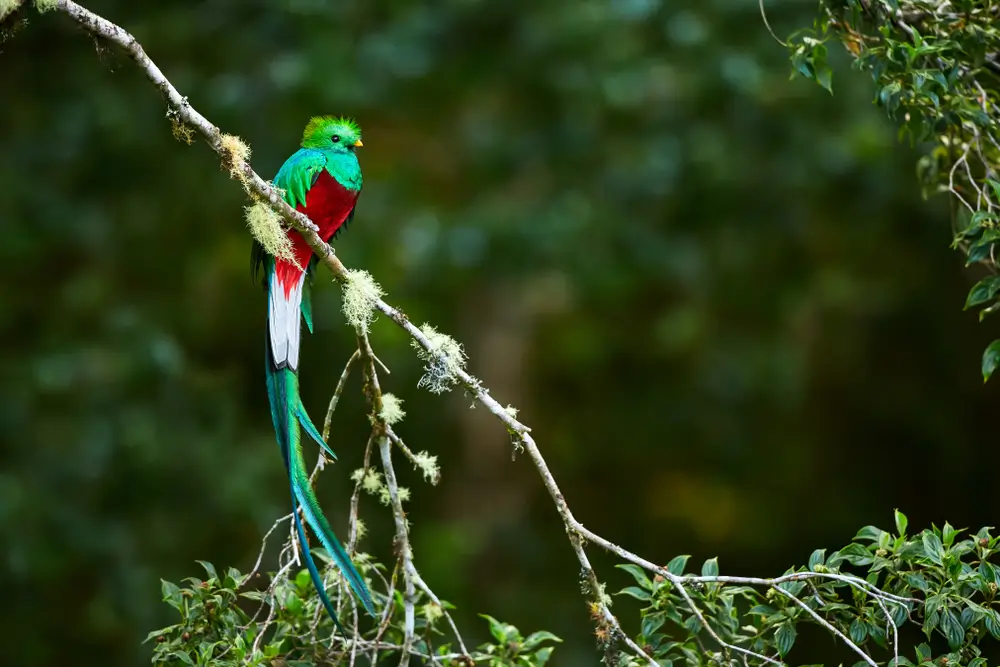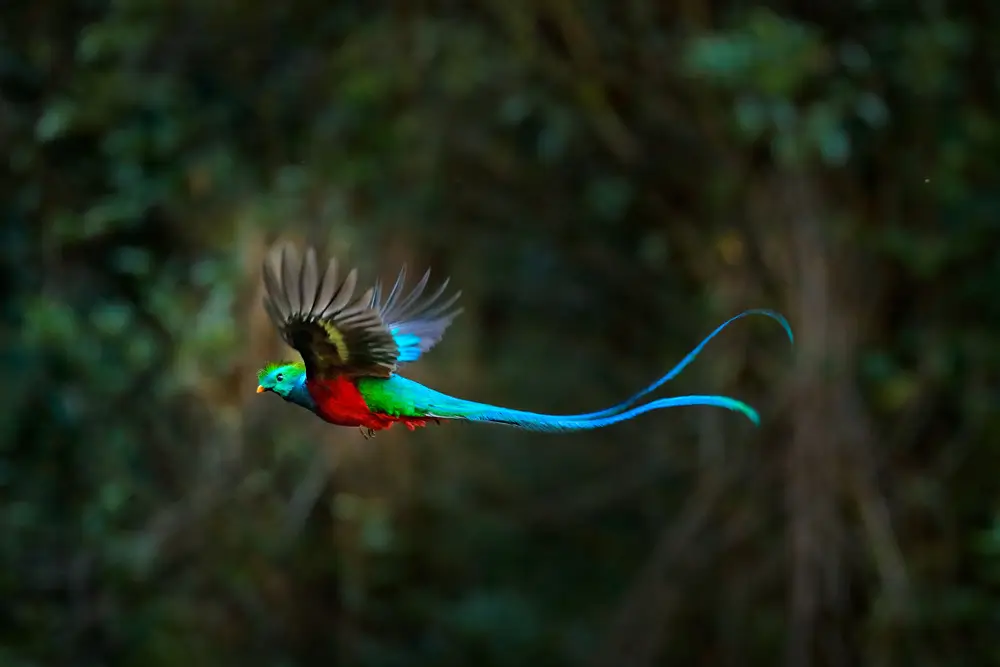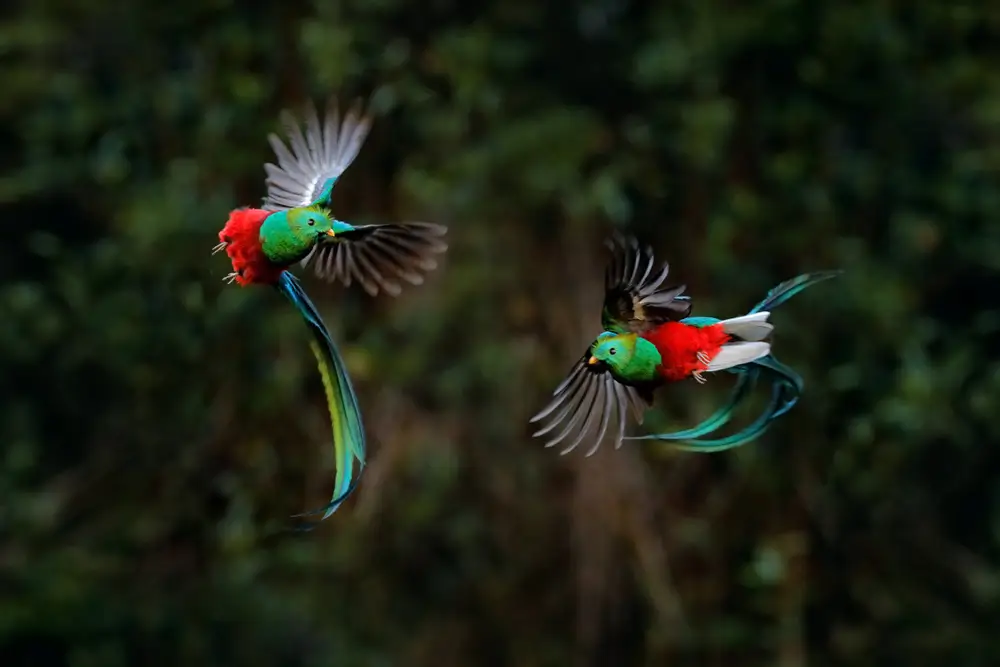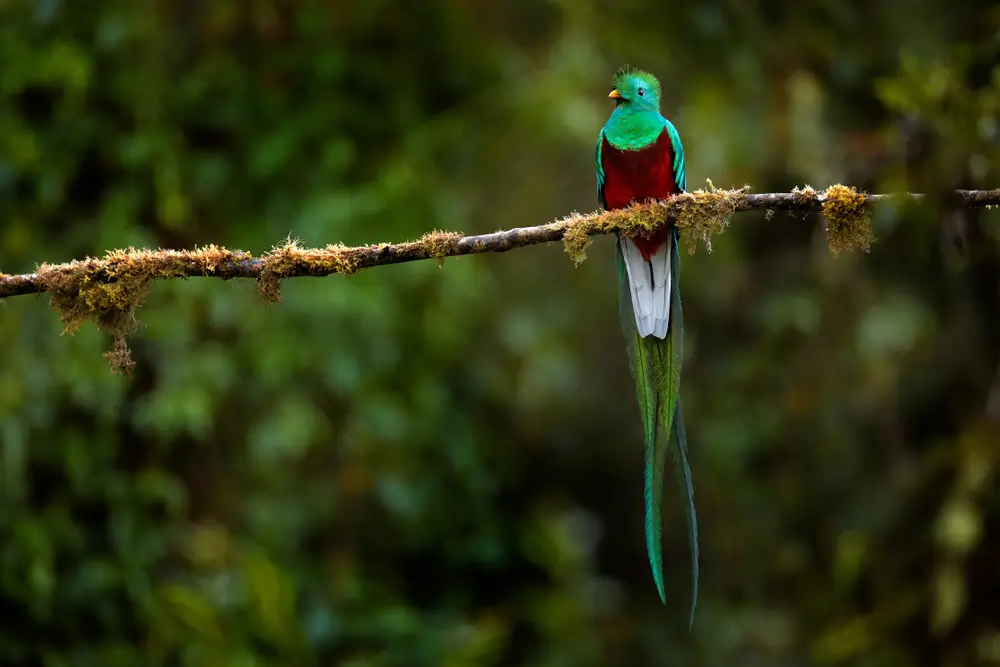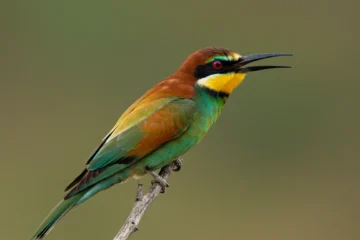The Resplendent Quetzal is an attractive bird known for its bright green and red feathers. . This bird is famous for its long tail feathers, which can grow over two feet. Quetzals eat fruits, insects, and small animals.
They prefer high-altitude forests with plenty of wild avocado trees. Bird watchers often travel to see them in their natural habitat though not common in the U.S.
Resplendent Quetzal Images
Features and Characteristics of Resplendent Quetzal
This bird depicts a unique appearance and contains a combination of attractive colors which can grab the attention of people at first sight.
General Characteristic
Resplendent Quetzal’s Features
Scientific Name
Pharomachrus mocinno
Size
About 14–16 inches long
Tail Length (Males)
Up to 3 feet long
Weight
Around 7–8 ounces
Color
Iridescent green with red belly
Habitat
Cloud forests of Central America
Diet
Fruits, insects, small animals
Conservation Status
Near Threatened
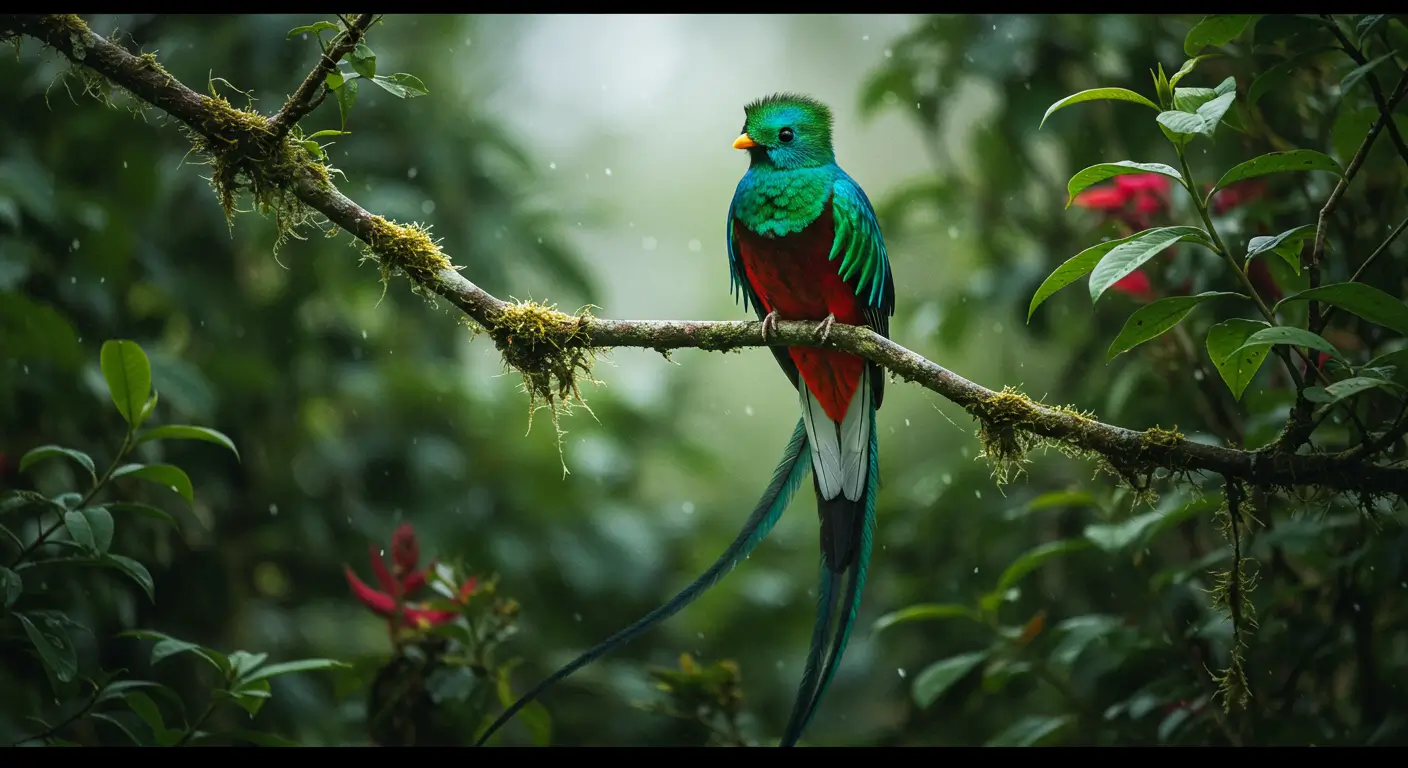
Life Span of Resplendent Quetzal
The resplendent quetzal lives around 15–20 years in the wild Central American cloud forests. Its lifespan is much shorter in captivity, rarely exceeding a few years due to stress and specialized dietary needs.
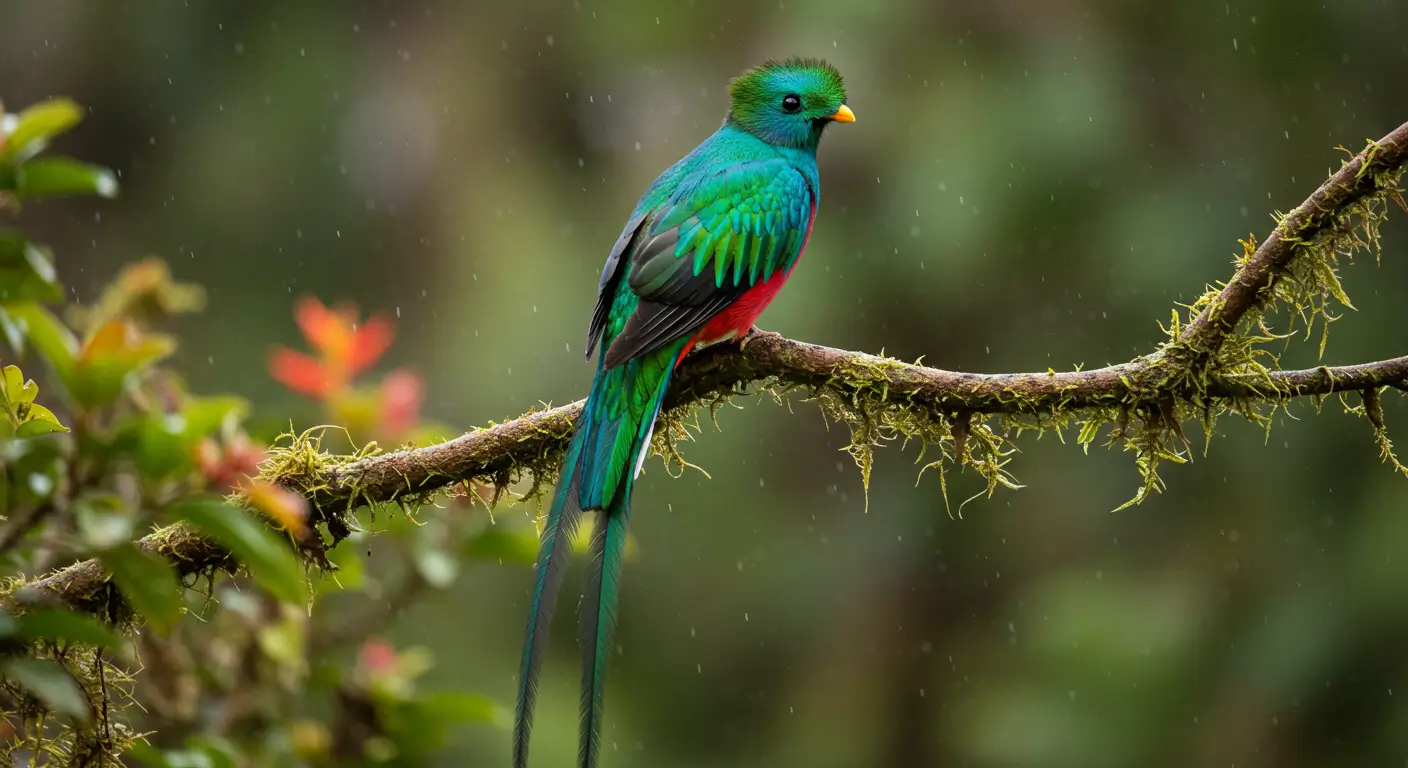
Interesting Facts About Resplendent Quetzal
This bird is another level of fascination in the wildlife birds because of its habits and difficulty in spotting them when in forests. Here are some catchy facts related to Resplendent Quetzal:
1. Sacred Bird of Ancient Civilizations
The Resplendent Quetzal was sacred to the Maya and Aztecs. It symbolized freedom because it was believed to die in captivity. Ancient rulers wore its feathers in royal ceremonies.
Its name comes from the Nahuatl word “quetzalli,” meaning “precious” or “beautiful.”
2. Males Have Long Tail Feathers
Male quetzals grow tail feathers that can reach up to three feet long. These feathers help attract mates during the breeding season. These feathers are shed yearly and regrow unlike many birds.
They make flying more challenging but are important for reproduction.
3. Unique Mating Display
Males perform dramatic aerial displays to impress females and attract them for mating. They fly high and then dive while spreading their tail feathers like a ribbon.
This display exhibits their vibrant green and red plumage. Females choose mates based on these performances.
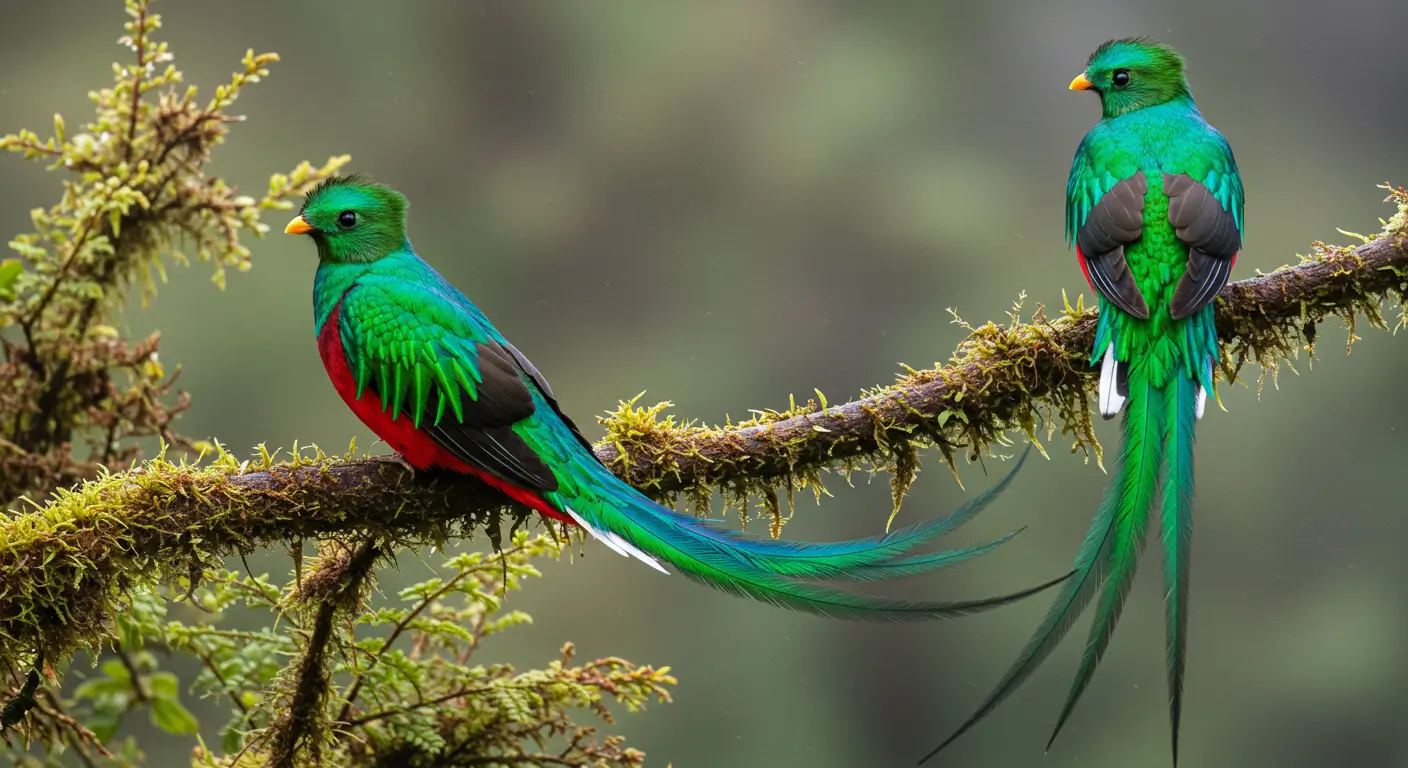
4. Feathers Change Color in Different Light
The quetzal’s feathers aren’t actually green, but they’re structured to reflect light. They can appear blue, green, or even golden depending on the angle.
This luster helps it blend into the forest canopy and makes it harder for predators to spot.
5. Prefers Cloud Forests with High Altitudes
The quetzal lives in cool and misty mountain forests unlike many tropical birds. It lives at heights between 4,000 and 10,000 feet. These forests provide the dense vegetation and fruiting trees it needs.
6. Specialist Feeder on Wild Avocados
Quetzals primarily eat wild avocados and other small fruits. They swallow them whole and later regurgitate the seeds. This makes them essential for maintaining forest biodiversity.
Many trees wouldn’t spread their seeds effectively without their help.

7. Haunting and Melodic Call
The quetzal’s song is a mix of soft whistles and hollow tones. Some say it sounds like a flute playing in the distance. Males call more frequently to attract females during mating season.
These calls echo through the cloud forests and add to their mysterious presence.
8. Rely on Woodpeckers for Nesting Holes
Quetzals don’t build their own nests. Instead, they use abandoned woodpecker holes in rotting trees. They carefully widen these cavities with their beaks.
Nesting in hollow trees helps protect their eggs from predators.
9. Both Parents Share Egg Incubation Duties
Male and female quetzals take turns incubating their eggs. The male covers the nest during the day, while the female takes the night shift for taking care of eggs.
This teamwork helps keep the eggs at a steady temperature. The chicks hatch after about 18 days of complete care.
10. Chicks Stay Hidden for Weeks
Baby quetzals stay inside the nest cavity for around three weeks. Parents bring them fruit and insects until they’re strong enough to take first flight.
Their tail feathers take months to grow once they leave the nest. Young males won’t develop their long tail plumes until adulthood.
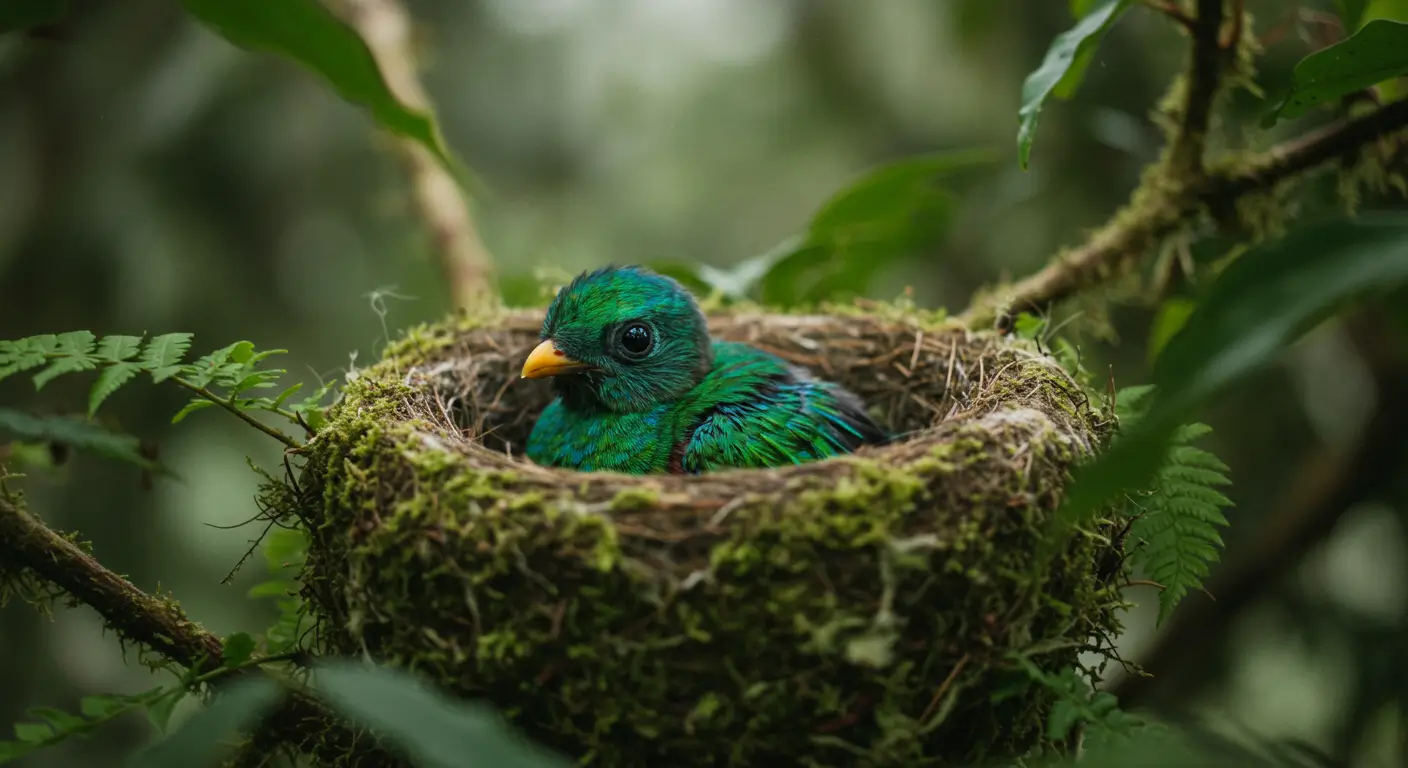
11. Near-Threatened Species
Deforestation is the biggest threat to the Resplendent Quetzal. It needs large and unbroken cloud forests to survive. Conservation groups work to protect its habitat in Central America.
Eco-tourism also helps raise awareness about its importance.
12. Fly Like a Hummingbird
The quetzal can hover briefly in midair. This helps it pluck fruit from branches without landing. Its strong wing muscles allow it to stay in place while feeding. This skill is rare among birds of its size.
13. Beak Is Small for Its Diet
The quetzal has a small and delicate beak compared to other fruit-eating birds. However, it can still swallow large fruits whole. The beak is adapted for gripping slippery food rather than tearing it apart.

14. Difficult to Spot in the Wild
The quetzal blends very well into the forest despite its bright colors. It stays high in the trees and avoids open spaces for the fear of being seen by animals.
Even experienced birdwatchers struggle to find one. Patience and luck are needed to catch a glimpse.
15. Displayed on Guatemala’s Flag and Currency
The quetzal is the national bird of Guatemala. Its image appears on the country’s flag and currency. The Guatemalan currency is even called the “Quetzal.”
16. It Rarely Flies Long Distances
Quetzals are not strong long-distance fliers. They mostly hop between branches in search of food. Their flight is short, direct, and somewhat clumsy.
This is why they need dense forests with plenty of fruiting trees close together.
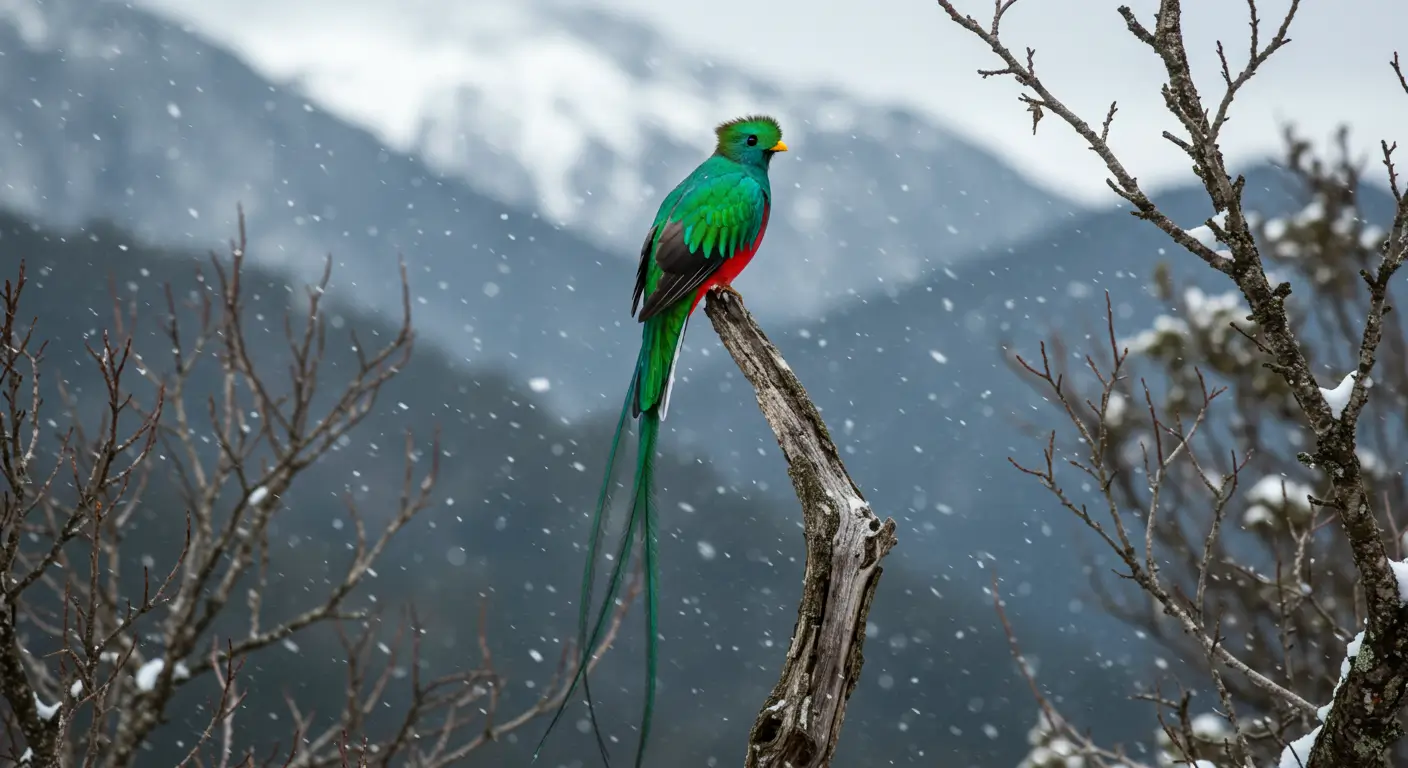
Sightseeing of Resplendent Quetzal
The sightseeing is quite tough and it is very difficult to spot them when resting on the tree branch.
Getting good clicks of this bird is no less than a complete art in its own. Here are some tips to capture good clicks of this bird. Resplendent Quetzal is a very pretty and attractive bird because of its rare sightseeing and unique behavior. It holds value even in the ancient culture and symbolizes freedom. This bird gains a special interest because of its lifestyle and appearance. If you spot one at any place, do not forget to have some clicks of this rarely seen bird. Resplendent Quetzals don’t live in the USA. They are native to Central America, mainly in cloud forests of Costa Rica and Guatemala. This bird is famous for its bright green and red feathers, long tail, and its role in Aztec and Mayan culture as a sacred symbol of freedom. It mainly eats wild avocados and other fruits but also feeds on insects and small frogs. Yes, it is considered near-threatened due to habitat loss and deforestation in its native cloud forests.
Location
State in Which it is Located
San Diego Zoo
California
Arizona-Sonora Desert Museum
Arizona
Houston Zoo
Texas
Zoo Miami
Florida
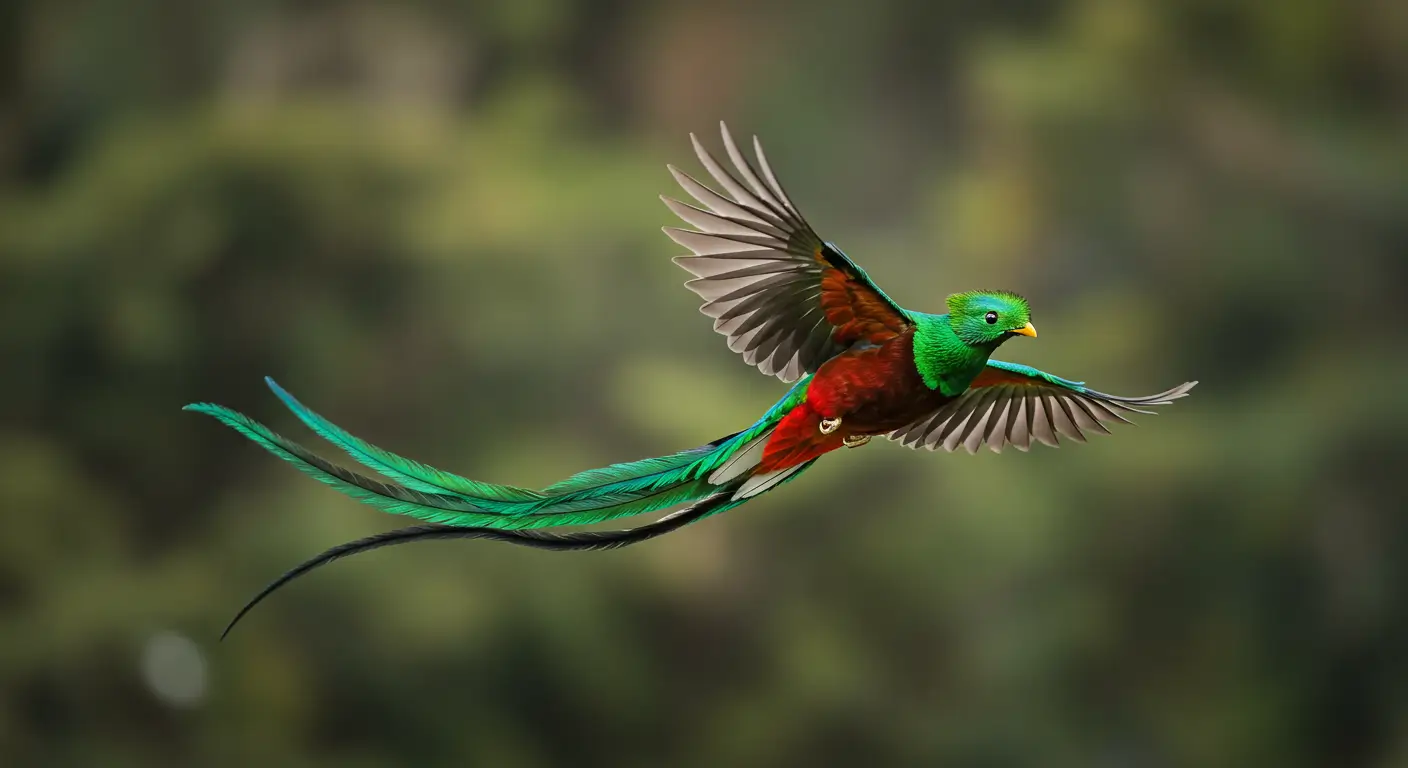
How to Have Some Memorable Clicks of Resplendent Quetzal
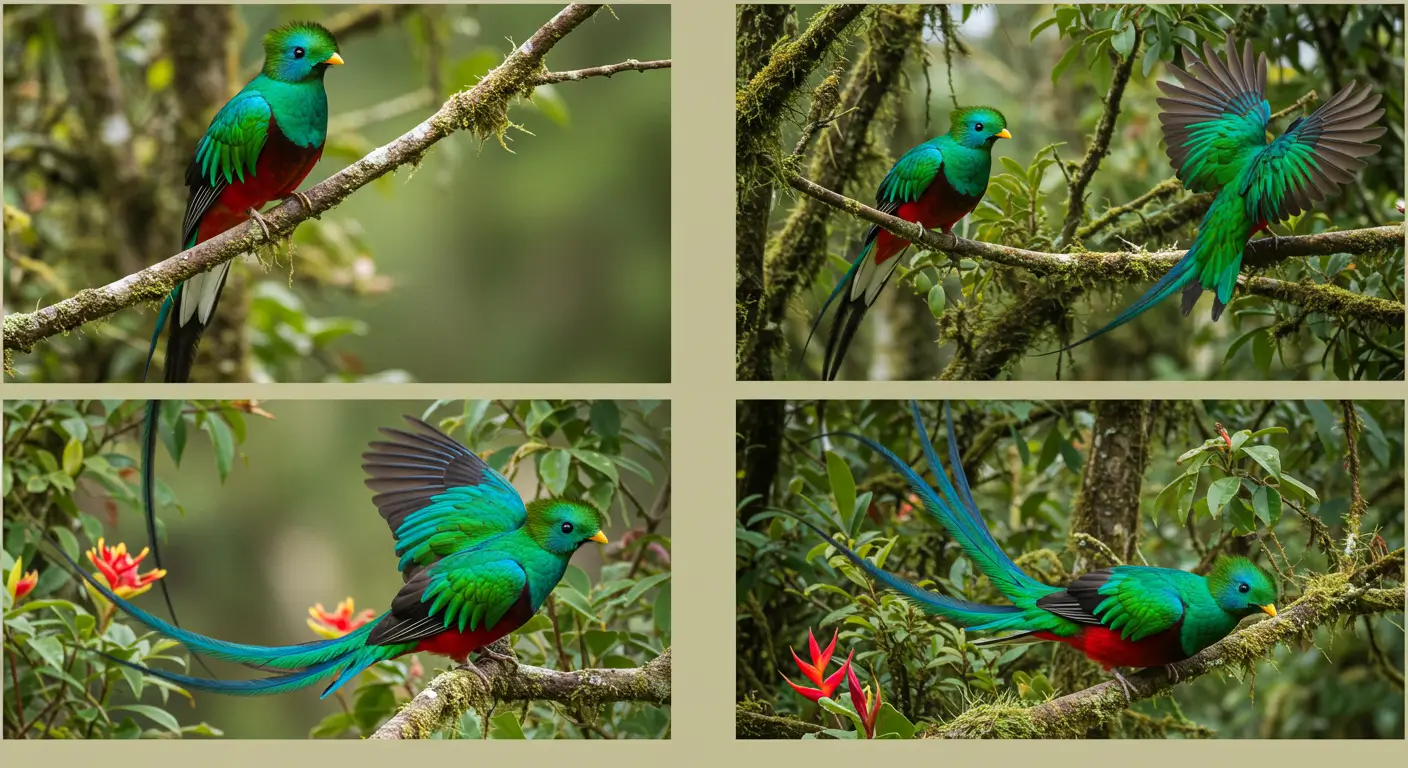
Wrapping Up
FAQs
1. Where can you see a Resplendent Quetzal in the USA?
2. Why is the Resplendent Quetzal famous?
3. What does the Resplendent Quetzal eat?
4. Is the Resplendent Quetzal endangered?


